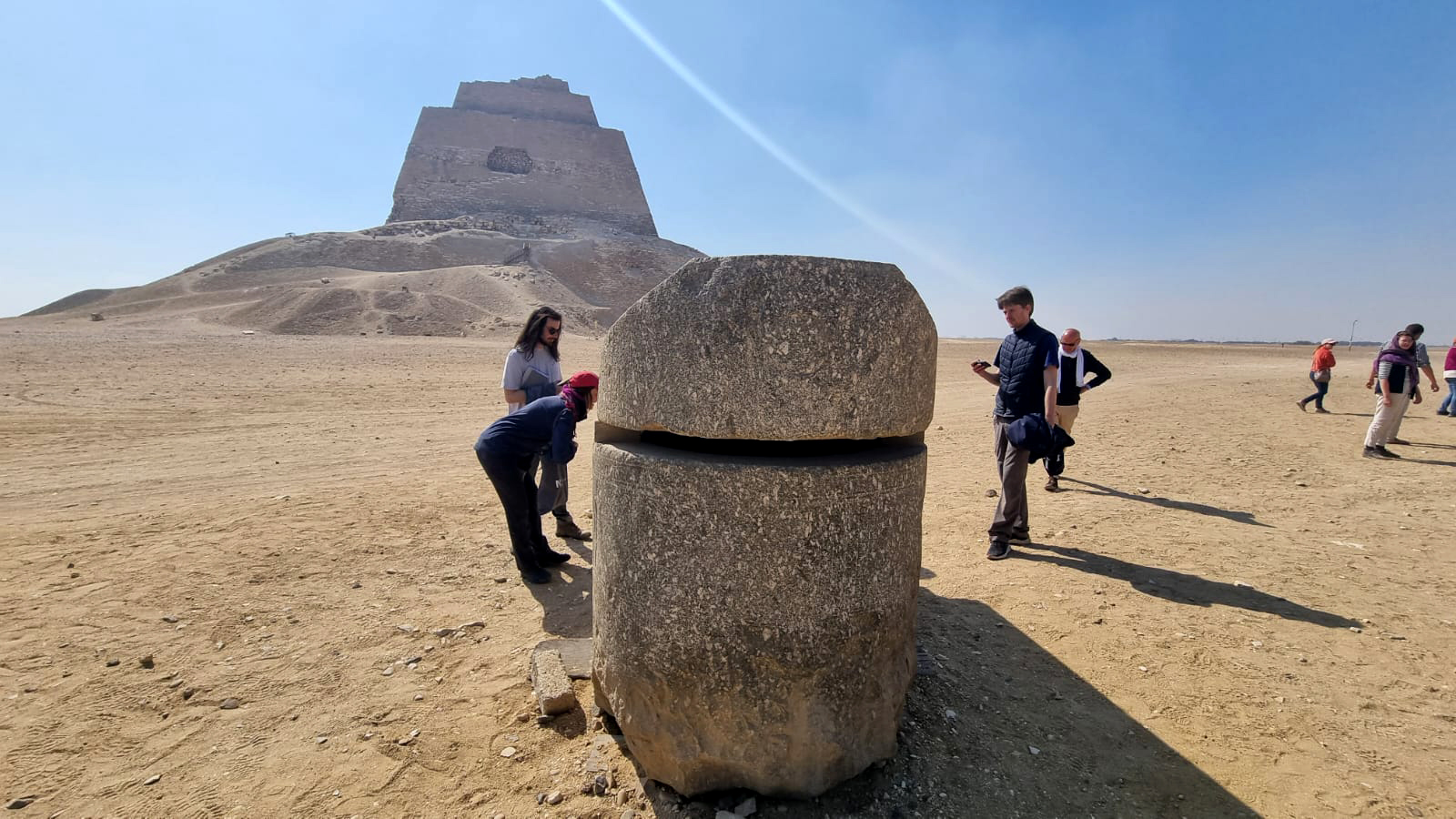Week 7-8: 18–27 February
On Sunday, we kicked off the week with a trip to the Fayum. When we pulled up to Meidum, we were greeted by a pyramid rising out of a mound of rubble. Originally started by Huni, this pyramid was elaborated in three successive phases and finally finished by Snefru as a true pyramid with a narrow, tall corbelled chamber in the middle, which we visited. Mastaba 17 was next, a short walk away. Navigating the passage into the burial chamber required some crawling and perhaps a few ribs were dislocated, but it was all worth it in the end to see the hunky red granite sarcophagus on the inside (along with a lot of bats).

Back on the outside and feeling reborn, we moved on to Lahun, where the man of the hour Johan “Master Schrouten” Oosting introduced us to Senwosret II’s 12th Dynasty pyramid and the surrounding rock core mastabas. He explained how the pyramid had been built with stone walls radiating from the center filled in with mud bricks and cased in limestone. After a jaunt around the pyramid, we descended into Tomb 10 and got lost in its maze of tunnels. Surprise! More bats. We ended the day out with a walk around the remains of the Valley Temple and what was once the town of Kahun (probably the best ancient commute we’d seen so far).

Being the studious scholars we are, we all made the best possible use of our Monday and worked from dawn to dusk (and later!) on our papers. Some took advantage of the IFAO’s gourmet lunch while others were content to convene around kitchen tables and at koshary joints. The next day the crew met bright and early at NVIC to make our return trip to the passport office to retrieve our renewed visas. We shimmied through the crowd and completed our first task: handing in our passports and receiving a queue number for our appointments in the afternoon. We found ourselves back by 3pm and pleasantly surprised at how smooth receiving our cards and passports turned out to be.

On Wednesday, we were joined by Peter Der Manuelian on our trip to Saqqara. He led us to the main attraction right off the bat (not that we saw any): Djoser’s step pyramid complex. We were awed by the gate into the complex with its “timber” ceiling and engaged columns. Some among us were tempted to demonstrate our fitness with a jog around the boundary markers in the Heb Sed court, and after we said hello to the king in his serdab, we toured the inside of the step pyramid itself. Later, Unas’ pyramid gave us an opportunity to test our hieroglyphic decipherment skills. At the New Kingdom cemetery we visited the tomb of Maya and greeted the yellow figures in his reliefs before moving on to the tomb of Horemheb. Since this tomb was constructed before he built his royal resting place in Thebes, the decorative program in his Saqqara tomb reflects the Amarna-era influences in vogue during his military tenure under Akhenaten.

Peter rendezvoused with Sergio – whose NVIC lecture we enjoyed last week – and let us loose in the Teti cemetery, where we roamed around Mereruka’s tomb. In the maze of chambers, we admired all sorts of scenes from dancers to disobedient tax-payers, hippopotami to hyenas. We made brief pit stops in Teti’s pyramid and the tomb of the vizier Kagemni. Yagmur’s presentation at the Serapeum was next. She led us through the newly-restored catacombs and remarked on some of the 24 colossal sarcophagi for Apis bulls produced from the 26th Dynasty onward. After reuniting with Peter and Sergio we visited the tombs of Nemtymes (a Ramesside official) and Maya (Tutankhamun’s wetnurse) and finally also the Imhotep Museum, where we saw humongous alabaster vessels and some of Djoser’s faience tiles.

On Thursday evening we met up to have our last supper with our fearless leader, Marleen De Meyer, at Taboula, Garden City. We had a lovely meal, reminiscing about the past few weeks, and we gave Marleen some puzzles and earrings as a goodbye gift. Afterwards, a few of us convened at the Swiss Institute, drank some tea and beers by the Nile, toasting to Borchardt as we lamented over having less than a week left in Cairo.
Friday was a free day, which many of us spent preparing for the GARDEN IX Conference – a daunting but exciting task. For some of us, it was our first time presenting, but we cheered each other on remotely as we worked all over Cairo. In the evening, a few of us tried some authentic Chinese food in Abbassia at El Amricany, which was quite the change from our usual tamiya.

On Saturday then came the long-awaited GARDEN IX conference. NVIC boasted a killer contingent with six podium presenters and two posters. Guilia Magnani led the charge with a proposal for an augmented reality app to introduce the Tomb of the Unknowns at Burg et-Tuyur. Next, Elissa Day presented on depictions of birds and their relationship to climate change. Johannes Schmitt problematized scribal errors – what are they, why are they made, and what can they tell us about scribal education? Right before lunch, Johan Oosting thrilled us with his presentation on Nehesy, a mysterious king (Really? Probably.) from the Second Intermediate Period. Koshary was served in the DAIK garden and Simon De Ceuster tried his best not to spill any on his crisp white shirt while he showed off his poster on a coffin fragment from the museum in Leuven. Eva De Smet’s poster asked whether the Mnevis bull can be considered a counterpart of the Apis bull and vice versa. (The verdict? They can). The lectures resumed with Omar Ghaly’s presentation, which compared documentation regarding a fisherman at Deir el-Medina to a conversation with a contemporary fisherman from Kafr el-Sheikh. And Annely Arends rounded out the day with a presentation on glass beads. After our afternoon siestas, those of us who were able gathered for a post-GARDEN shindig-slash-karaoke party. It was also a certain someone’s birthday eve (ahem Heidelberg) – and at midnight, party hats, candles, and cake were produced.
-
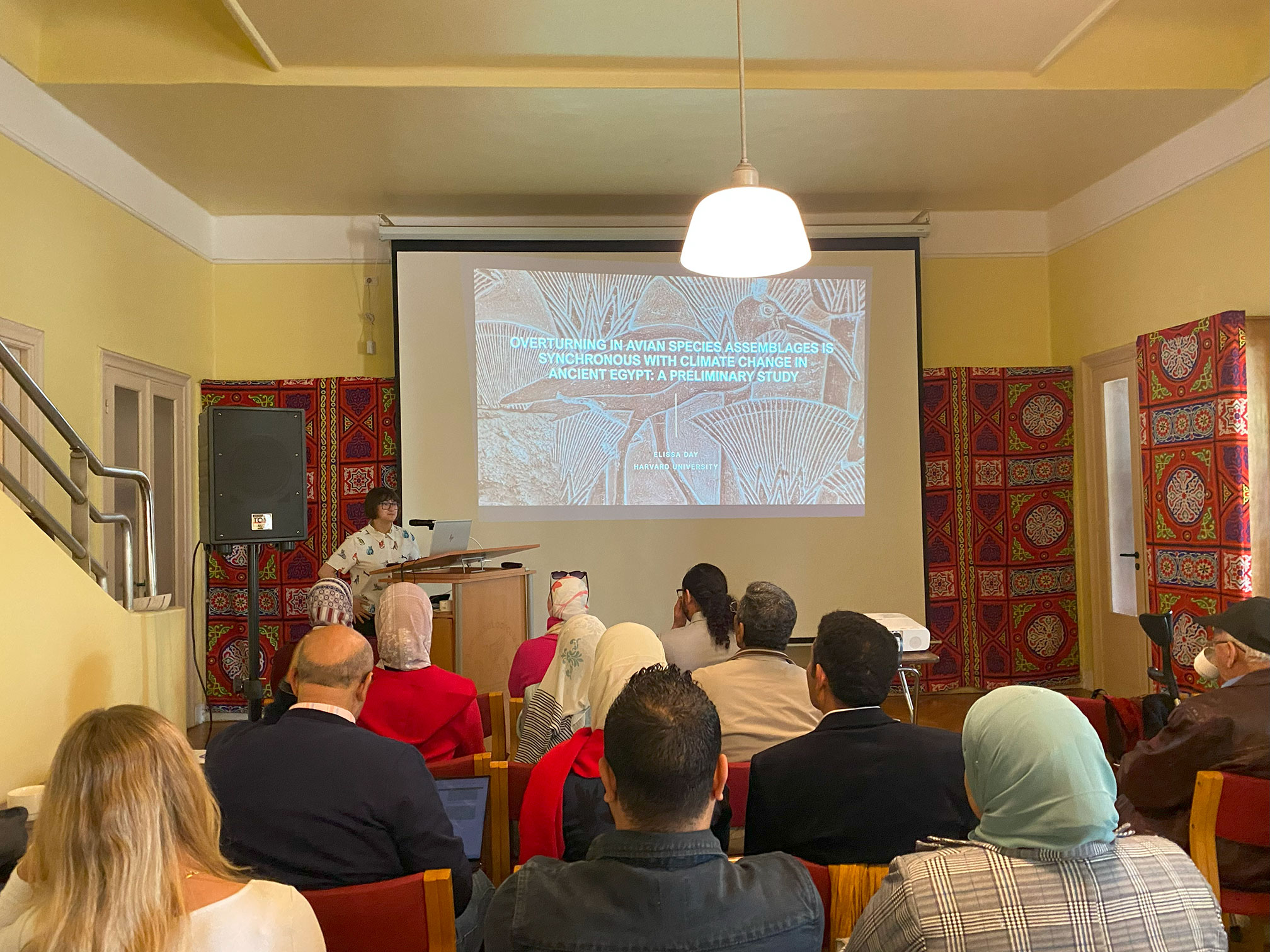
NVIC presentations at GARDEN IX -
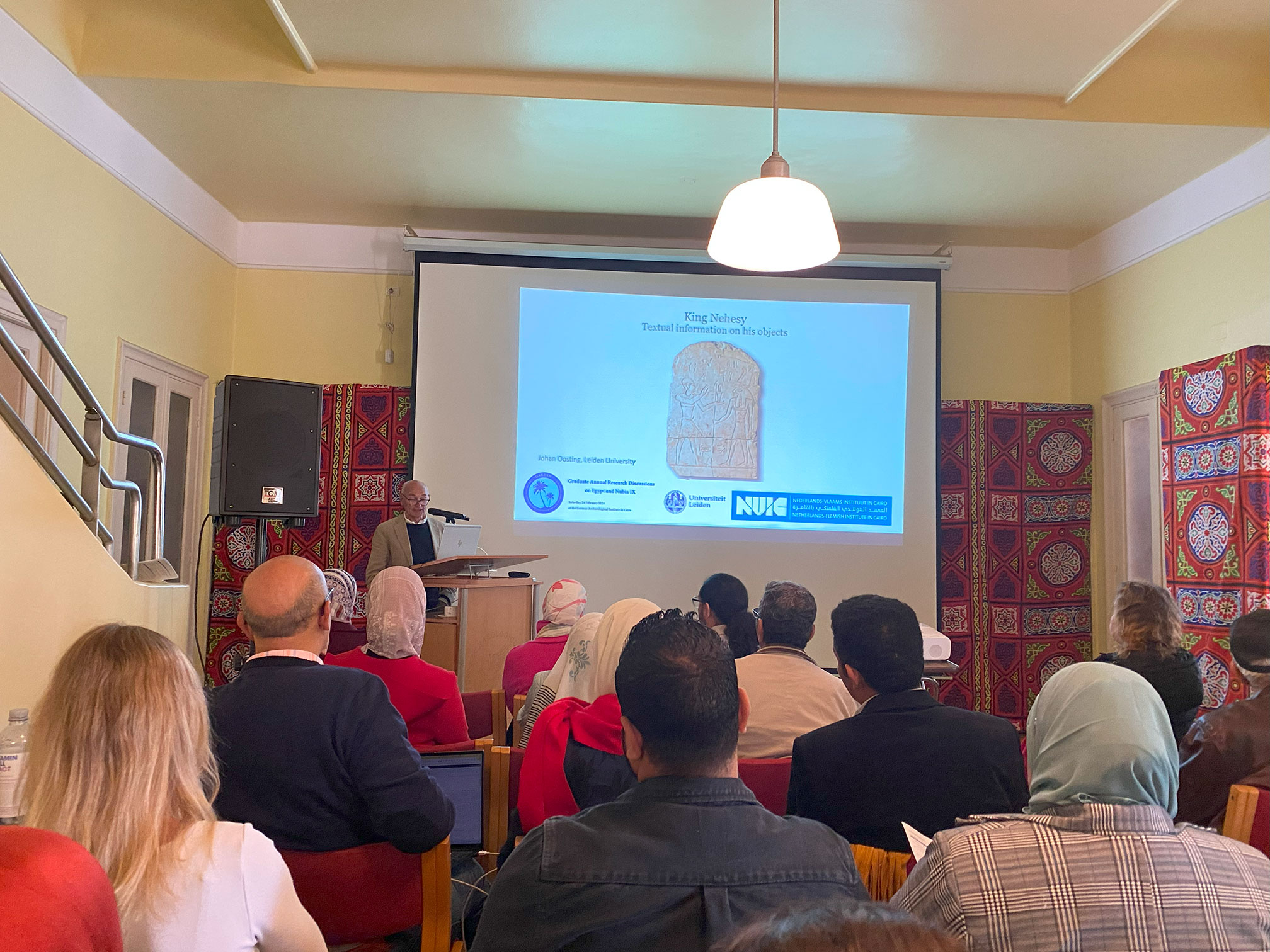
-
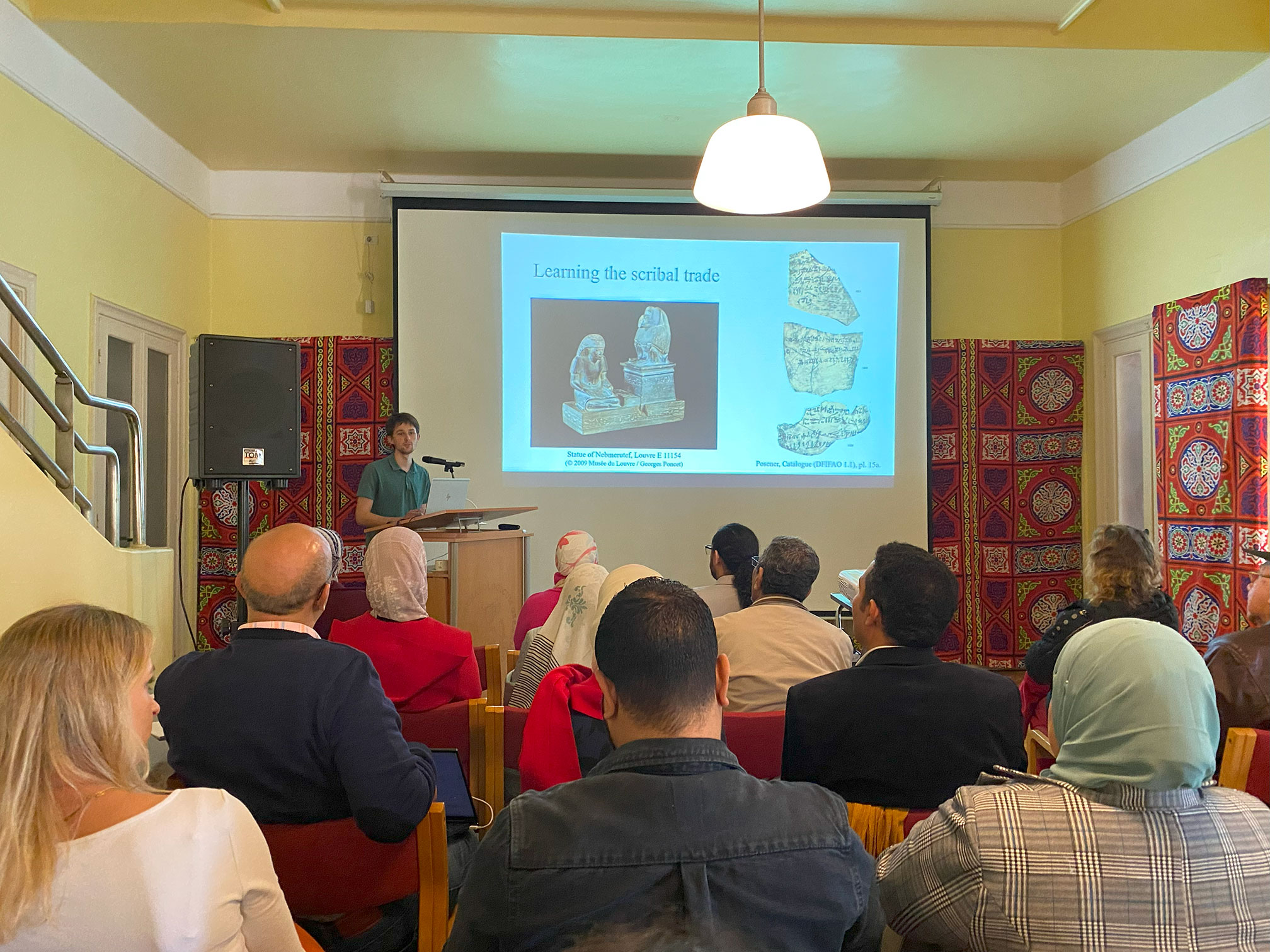
-
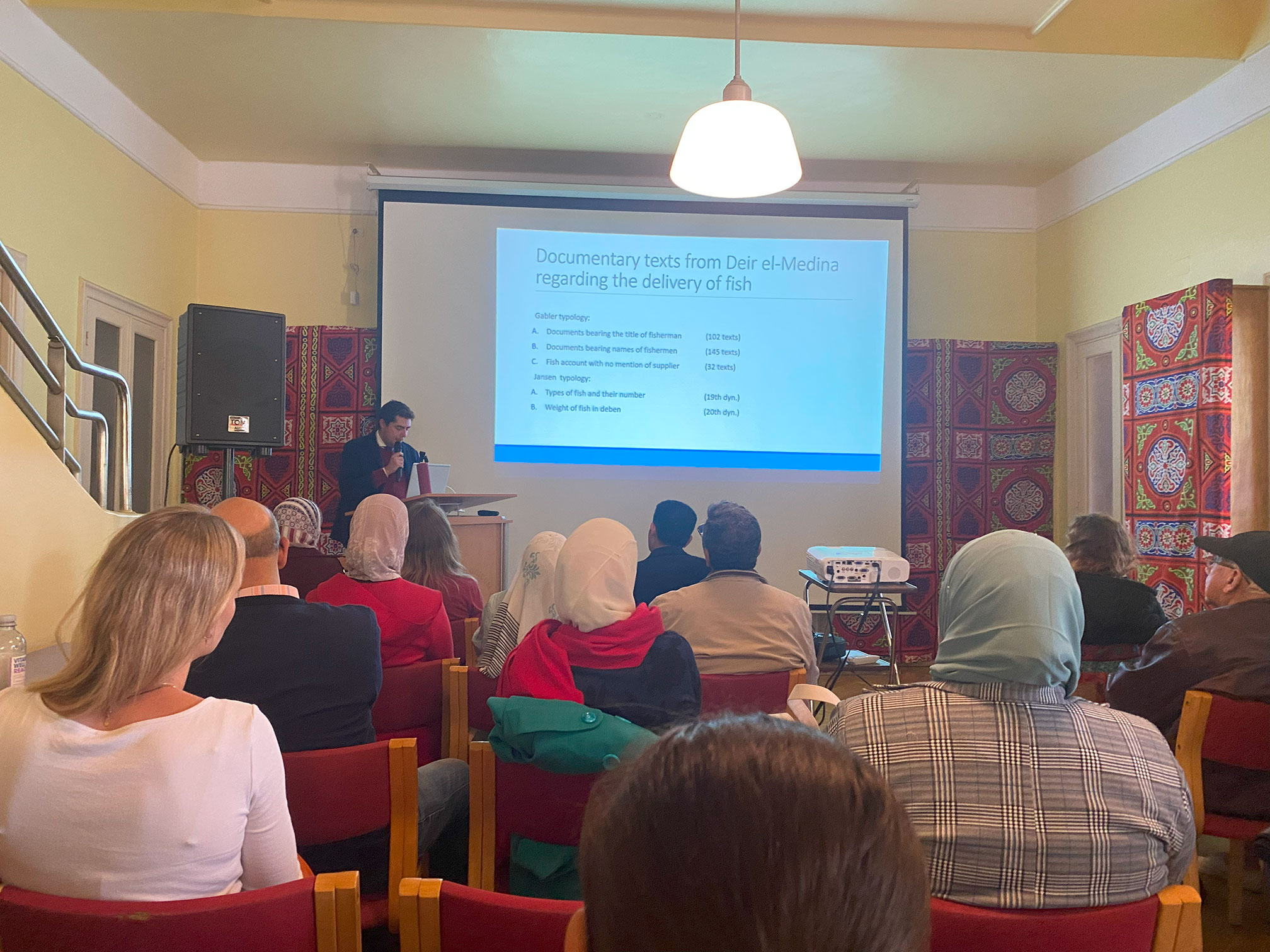
-
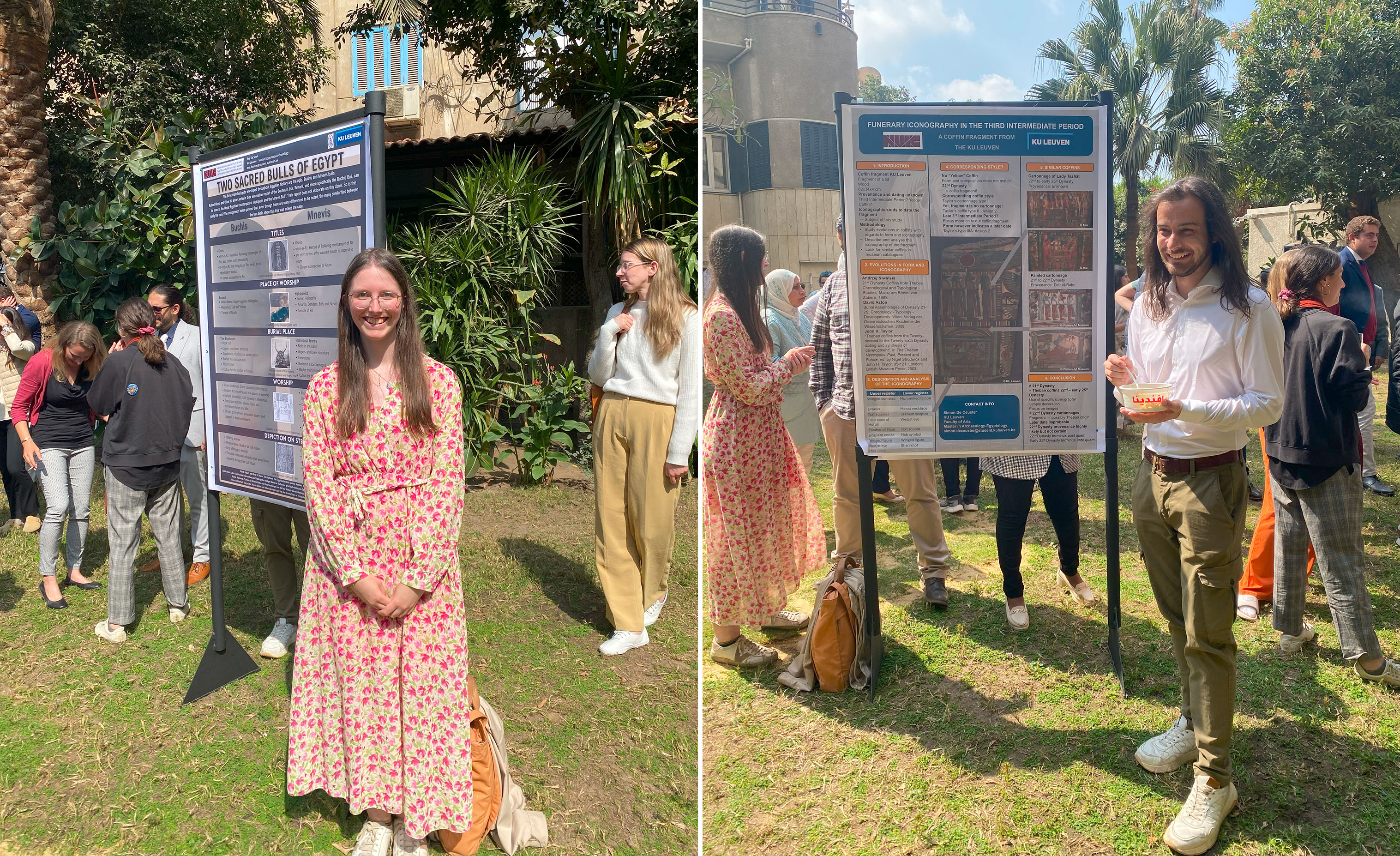
Left to our own devices, we (Grace) slept in until noon. Some of us made up for lost time over coffee and afternoon breakfast (read: lunch) at Sufi and then hit the road. Afterwards we toured the exhibition of royal mummies at the National Museum of Egyptian Civilization (NMEC). It being Johannes’ actual birthday today, some of us gathered for an Indian feast at Maharaja.
On Monday, some of the crew convened at the German Institute for some museum-object-paper-cramming, and some of our comrades met us afterward for lunch and coffee at Dozes, whose reliable Wi-Fi has become legendary. Paparazzi spotted Gemma Blanch Soriano and Omar “the fifth pyramid” Ghaly eating lunch at Oldish. Annely, Elissa, and “Groovy” Grace Clements visited Mina Milad’s art studio close to Ramses station. Anonymous sources report sightings of Elissa eating a kebab at Chez Leiden in the evening.

Tuesday was the final day for some of our cohort, so we packed in as much as we could (both literally and in our suitcases, which are full of swag and memories of the semester - no tamiya or bats, though). A considerable contingent of NVIC students were discovered lurking in the research archives of the Egyptian Museum, whilst others worked on their papers from home in between laundry and lunch at places we have grown to love. We re-convened for a tearful goodbye dinner over Talabat-ed Cairo Kitchen eats hosted by the Leuven students. We sat for some dapper selfies, and then some of us headed to Khan el-Khalili, where we picked up some of the best souvenirs of the entire trip - engraved notebooks, handmade wall cloths, and alabaster camels. It was quite tough to say goodbye, but we are hopeful for a reunion, whether in Leiden, Leuven, Cairo, or further afield (Beantown?!). It was a beautiful evening to end what has been a beautiful semester. Egypt, we will be back! Insha’Allah.

Elissa Day & Grace Clements

